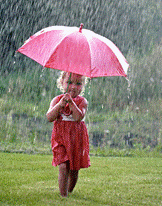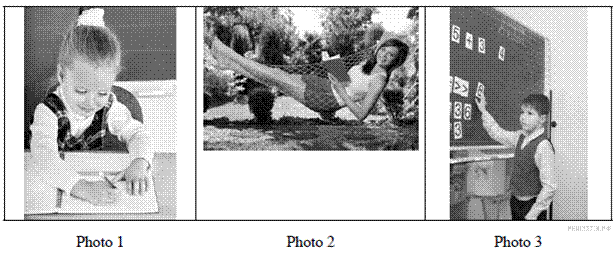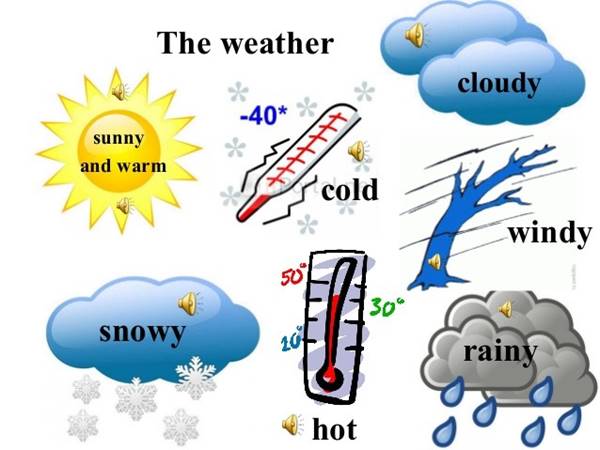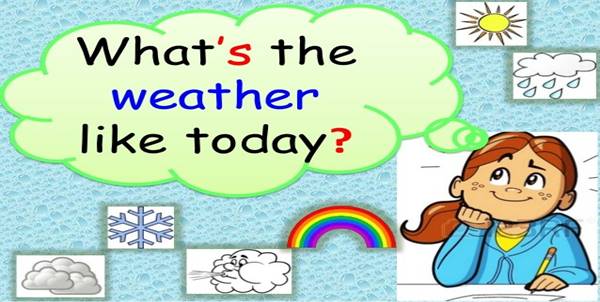
Подготовка
к устной части
ВПР
по английскому языку
в 7 классе
Содержание
Данная методическая разработка создана для подготовки обучающихся 7 классов к устной части Всероссийской проверочной работы по английскому языку. В разработке предоставлены все необходимые правила и основной лексический материал для описания фотографий, тренировочные тексты и ссылка на правила чтения.
I. План описания фотографий…………………………………….……2
II. Пример описания фотографий……………………………………....3
III. Основной лексический материал
1. Описание внешности…………………….……………………….…..5
2. Описание погоды и природные явления.………………………...….9
3. Одежда…………………………………………………………….….13
IV. Основные грамматические правила, используемые в описании фотографий
1. Оборот there is/there are…………………………………….………...15
2. Предлоги места. Где? The preposition of place. Where?....................16
3. Present simple tense…………………………………………………....17
4. Present continuous…………………………………….……………….19
V. Тренировочные тексты для чтения……………………………….….21
VI. Источники……………………….……………….……………………25
I. План описания фотографий
1. The place
In this picture the action is taking place in ……
In the picture I can see ...
There’s / Thereare ...
2. The action (действие)
Тhese people are / this girl is / this boy is ........ V-ing
It’s raining. It’s sunny.

3. The appearance of the person
- The girl / boy is about … years old.
- She / he has … eyes and dark / fair hair
- The girl / boy is wearing …
- I think she / he is …….
4. Whether you like the picture or not
Why
I like the picture because it is bright and colourful.
It is full of positive emotions.
Itremindsmeof …….
II. Пример описания фотографий
1. Выберите фотографию и опишите человека на ней. У вас есть полторы минуты на подготовку и не более двух минут для ответа. У вас должен получиться связный рассказ (7–8 предложений).
План ответа поможет вам:
• the place
• the action
• the appearance of the person
• whether you like the picture or not
• why
Start with: “I’d like to describe picture № ... .The picture shows …”



Пояснение.
I’d like to describe picture №3. The picture shows a young girl. I guess the action is taken in the library. In the picture I can see a lot of books on the shelves. The girl is sitting in the armchair. She is reading a book. I think the book is interesting because the girl is smiling. I like this picture because it’s full of positive emotions. I like reading and the picture reminds me of my visit to the library.

Пояснение.
I’d like to describe picture №2. The picture shows us a girl. The photo was (probably) taken outside. In this picture the action is taking place in the park. Looking at this girl I get the impression that she is reading a book. The girl looks like she is about 15 years old. She is wearing a fair blouse and a dark skirt.
I guess she is quiet and kind, because she has a beautiful smile.
I like the picture because the atmosphere is peaceful. It makes me think of summer.
III. Основной лексический материал
1. Описание внешности
She has very pale skin. — У нее очень бледная кожа.
I am black. I have dark skin. — Я темнокожий. У меня темная кожа.
He has a thin face —У него худое лицо.
he has got a round face — у него круглое лицо
he has square-faced — у него квадратное лицо
Волосы
Цвет волос:
blonde/fair hair — светлые волосы (a blonde — блондинка)
brown hair —
каштановые волосы (abrunette —
брюнетка)
red hair —
рыжиеволосы (areadhead — рыжая/рыжий)
blackhair —
темныеволосы
greyhair —
седыеволосы
типволос:
long — длинные
short —
короткие
wavy —
волнистые
curly —
кудрявые
straight —
прямые
Примеры:
She has long, straight, black hair (Her hair is long, straight and
black). —
Унеедлинныепрямыечерныеволосы.
He has no hair. —
Унегонетволос. (He is bald — онлысый).
Частилица
forehead (лоб)
wide —
широкий
narrow —
узкий
prominent —
выпуклый, выдающийся
eyes (глаза)
blue —
голубые
brown —
карие
green —
зеленые
dark —
темные
grey —
серые
big —
большие
small —
маленькие
tiny —
крошечные
large —
огромные
eyebrows (брови)
thick (bushy) —
густые
sparse —
редкие
nose (нос)
long —
длинный
short —
короткий
wide (broad) —
широкий
narrow —
узкий
flat - приплюснутый
snub —
курносый, вздернутый
hooked —
крючковатый
hawkish —
ястребиный (орлиный)
lips (губы)
narrow —
тонкие
full —
полные
ears (уши)
small ears —
маленькиеуши
large ears —
большиеуши
beard —
борода
moustaсhe —
усы
Описываем комплекцию человека по-английски
Прилагательные для описания полных людей
fat (толстый) и thin(худой).
fat = overweight (имеющий лишний вес), heavy, big, large
Человека с крайне высокой степенью ожирения характеризуют словом obese.
Прилагательное «chubby» используется при описании полного ребенка.
Для описания полных мужчин используются прилагательные husky или heavyset, для женщин — plump или curvy
Прилагательные для описания худых и стройных людей
Прежде всего, упоминая худого или стройного человека, мы можем использовать слово thin. Синонимами этого определения являются — slim и slender.
Что касается атлетического телосложения, то его можно охарактеризовать словами athletic, muscular, fit, strong, ingoodshape.
Еще одно определение является сленговым — ripped. Оно означает, что у человека ярко выраженные мускулы, которые видны невооруженным взглядом.
Описываем рост человека
tall —
высокий
short — маленького роста
to be medium / average / normal height — быть среднего роста
My brother is verytall. — Мойбраточеньвысокий.
Mykidis quiteshort. — Мой ребенок довольно
маленького роста.
I am relativelynormalheight. — У меня относительно
средний рост.
Описываем степень привлекательности
Характеристика красивой, привлекательной женщины по-английски:
Beautiful- красивая (жен.)
pretty
lovely
gorgeous
stunning —
определение очень красивой женщины, которая привлекает повышенное
внимание (=
Sheturnsheads.)
Следующие прилагательные могут употребляться как для мужчин, так и для женщин:
Нandsome – красивый (муж.)
attractive — привлекательный
good-looking —
хорошо выглядящий
cute —
милый (часто используется для характеристики детей и животных)
She’s notveryattracrive. —
Она не особо привлекательная.
He’s notsogood-looking. —
Он не такой уж красивый.
Кроме того, в английском для описания внешности существует прилагательное plain, обозначающее характеристику человека с обычной, непримечательной внешностью, которого нельзя назвать ни красивым, ни уродливым.
2. Описание погоды и природные явления
Прилагательные
· Excellent — отличная.
· Glorious — восхитительная, славная.
· Superb — чудесная.
· Adverse — неблагоприятный.
· Sweltering — знойный.
· Boiling — очень жаркая.
· Nasty — ненастная.
· Freezing — очень холодная, леденящая.
· Humid — влажная.
· Muggy — теплая и влажная, удушливая.
· Unpredictable — непредсказуемая.
· Changeable — изменчивая.
· Frosty — морозная.
· Stormy — грозовая, бурная.
· Unseasonable — не по сезону.
· A spellof … weather — период такой-то погоды.
Существительные
· sun — солнце
· sky — небо
· cloud — облако, туча
· rain — дождь
· snow — снег
· fog — туман
· mist — легкий туман, дымка
· haze — дымка (обычно вызванная жарой)
· hail — град; идти (о граде)
· hailstones — градина
· snowflake — снежинка
· blizzard — снежная буря, пурга
· sleet — ледяной дождь, дождь со снегом

Температура
· warm — теплый (тепло)
· hot — жаркий (жарко)
· cool — прохладный (прохладно)
· chilly — холодный, прохладный
· cold — холодный
· freezing — ледяной
Слова и выражения для описания дождя
· rain — дождь
· damp — влажный, сырой (после дождя)
· drizzle — моросить; мелкий дождь
· shower — ливень (короткий)
· downpour — ливень
· pour — литься (о сильном дожде)
· It’srainingcatsanddogs. — Дождь льет как из ведра (идиома).
· torrentialrain — очень сильный дождь
· flood — наводнение
Обратите внимание, что сильный дождь переводится как «heavyrain», т. е. буквально «тяжелый», не powerful или strong, как вы могли подумать.
Природные бедствия
· thunderstorm — гроза
· snowstorm — буран, вьюга, метель
· tornado — смерч, торнадо, шквал
· hurricane/typhoon — ураган; тропический циклон
· earthquake — землетрясение
· tidalwave — приливная волна
· volcaniceruption — извержение вулкана
· drought — засуха
Основа предложения на английском про погоду
В любом грамматически правильном утверждении (предложения на английском про погоду не являются исключением) должны присутствовать субъект и действие. Это необязательно в родном русском, и именно поэтому может произойти путаница. Например, русское короткое предложение «На улице холодно» будет выглядеть в английском совершенно иначе — «It is coldin thestreet».
В данном случае it выполняет роль субъекта, is — действия, а дальше уже прилагается всё, что мы хотели сказать о погоде. Дословно перевод этого предложения на английский манер будет выглядеть так: «это есть холодно на улице». К этому нужно привыкнуть, так как иначе грамматически правильно выразить свою мысль о природных явлениях на английском будет сложно. Запомните одну вещь: большинство предложений о погоде начинаются с it, а дальше следует глаголto be в подходящем времени.

Фразы и выражения для описания погоды на английском с переводом
Говоря о теплой погоде
· О хорошей погоде на улице можно сказать по-разному, например:
· It’swarmtoday. — Сегодня тепло.
· It’swarmouttoday. — Нормально (Словосочетание «warmout» означает, что на улице хорошая, умеренная погода.И не жарко и не холодно, как говорится.)
· The weather is good. — Погодахорошая
· The weather is gorgeous today! — Погодасегодняпрекрасная!
· It’s a sunshineday! Сегодня солнечный день!
· It’shotoutside! — На улице жарко!
Говоря о холодной ненастной погоде
· It’scoldtoday! — Сегодня холодно!
· It’sraining. — Идет дождь.
· It’ssnowing. — Идет снег.
· It’s slushing outside! — На улицеслякоть!
· The weather is nasty today! Погода сегодня противная/отвратительная/мерзкая!
· It often snows in winter. — Зимойчастоидётснег.
· The temperature is 2 degrees below zero. — Температура 2 градусаниженуля.
3. ОДЕЖДА (СLOTHES)
She is wearing a fair blouse and a dark skirt.
Blouse
- блузка, кофточка
Boots - ботинки; сапоги
Cap - кепка; шапка; фуражка; шапочка
Cardigan - кардиган, шерстянаякофтанапуговицахбезворотника
Coat - пальто
Dress - платье (женское)
Evening gown - вечернееплатье
Flats - туфлибезкаблука
Flip-flops - вьетнамки
Footwear - Обувь
Gloves - перчатки
Hat - шляпа, шляпка; шапка; головнойубор
Headgear - Головныеуборы
Helmet - каска, шлем
Jacket - куртка
Jeans - джинсы
Jogging suit - спортивныйкостюм (дляпробежек)
Jumper - джемпер, толстовка
Jumpsuit - комбинезон
Long-sleeved shirt - мужскаярубашкасдлиннымрукавом
Mini-skirt - мини-юбка
Moccasins - мокасины
Open toe shoes - босоножки
Overalls - рабочийхалат; спецодежда
Overcoat - пальто, шинель
Platform shoes - туфлинаплатформе
Pocket - карман
Pullover; am. sweater, pullover - пуловер, свитер
Raincoat, waterproof (coat); am. raincoat - плащ, дождевик
Sandals - сандалии
Scarf - шарф; кашне
Shirt - рубашка; сорочка
Shoes - туфли; полуботинки
Short-sleeved shirt - тениска
Shorts - шорты
Skirt - юбка
Slates - сланцы
Slippers - тапочки
Sneakers - кеды, теннисныетуфли
Socks - носки
Sportwear - Спортивнаяодежда
Stocking - чулок
Strap; belt - пояс, ремень
Striped - полосатый
Suit - костюммужской
Sweatband - повязканалоб
Sweater - свитер, пуловер
Swimming/bathing costume, swimsuit; am. bathing suit, swimsuit - купальныйкостюм / купальник
T-shirt/tee-shirt; vest - майка
T-shirt; sweatshirt - футболка, тенниска
Trainers, running shoes; am. sneakers - кроссовки
Trousers; am. pants - брюки, штаны
Turtleneck - водолазка
Tuxedo - смокинг
Waistcoat; am. vest - жилет
Windbreaker - ветровка
IV. Основные грамматические правила, используемые в описании фотографий
1. Оборот there is/there are
Оборот + сущ+предлог+место
Мн.ч.
(+) There are bookson the shelves.
(-)There are not books on the shelves.
(?)Аre there books on the shelves? Yes, there are/No, there aren`t
***
Ед.ч.
(+)There isa computer on the table.
(-) There is not a computer on the table.
(?) Is there a computer on the table?Yes, there is/No, there isn`t
***
С неисчисляемыми существительными используется только оборот thereis:
(+) There is some milk in the cup.
(-) There is not some milk in the cup.
(+) Is there any milk in the cup? Yes, there is/No, there isn`t
***
How manybooks are there on the table?
How muchmilk is there in the glass?
2. Предлоги места. Где?
The preposition of place. Where?
inEngland- вАнглии
in the south- наюге
in the living-room- вгостиной
in the garden- всаду
In the water- вводе
inatown- вгороде
inthecountry- в сельской местности/за городом
in a shop- вмагазине
in a picture-накартине
in hospital- вбольнице
in the sky- нанебе
in a book- вкниге
in a car- вавтомобиле
in the middle- всередине
in a tree- надереве
***
athome- дома
atwork- наработе
atschool- вшколе
at the desk- запартой
at the table- застолом
at the door- возледвери
atthebusshop- на автобусной остановке
at a party- навечеринке
at the station- навокзале
at my Granny`s- убабушки
at a concert- наконцерте
***
оn the table- настоле
on a shelf- наполке
on the shelves- наполках
on the floor- наполу
on a plate- натарелке
on the wall- настене
on a horse- налошади
on the ceiling- напотолке
on the ground floor- напервомэтаже
on the first floor-навторомэтаже
on a bus- вавтобусе
on a train- напоезде
on the left- слева
on the right- справа
***
at home-дома
at work- наработе
at school- вшколе
at the desk- запартой
at the table- застолом
at the door- возледвери
atthebusshop- наавтобуснойостановке
at a party- навечеринке
at the station
at my Granny`s- убабушки
3. Present simple tense
Порядок слов в английском предложении строго фиксированный. В утвердительном предложении действует прямой порядок слов: подлежащие-сказуемое-второстепенные члены.
Образуется предложение Present Simple Tense достаточно просто. На первом месте подлежащие, которое может быть выражено существительным или местоимением. На втором месте сказуемое, выраженное глаголом без частицы «to».
I alwaysgetupearlyinthemorning – Я всегда встаю рано утром.
В данном предложении сказуемое «getup» стоит в 1 лице, единственном числе, и употребляется без частицы «to», и каких-либо окончаний. То же правило действует и для других лиц, как в единственном, так и во множественном числах, кроме 3-го лица единственного числа. Если подлежащие в предложении выражено местоимениями «He/She/It» или существительным в единственном числе, то у глагола-сказуемого появляется окончание -s/-es.
Mymothergoes shoppingeveryday – Моя мама ходит за
покупками каждый день.
Hebrushes histeetheverymorning – Он чистит зубы каждый
день.
Окончание –es появляется у глаголов, которые заканчиваются на -o, -s, -sh, -ch, -tch, -x, -z:
go – goes (идет), dress – dresses (одевается), brush – brushes (чистит), c – teaches (обучает) и другие.
Если глагол оканчивается на -у, то при прибавлении окончания –s происходят следующие «метаморфозы»:
· если согласная + -у, то -у меняется на -ie и к нему прибавляется окончание –s: totry – tries (пытается);
· если гласная + -у, то никаких изменений не происходит: tobuy – buys (покупаем).
В отрицательных предложениях в PresentSimpleTense появляется помощник – вспомогательный глагол do/does, к которому и присоединяется отрицательная частица not (не).
We do not go to the seaside in the evening – Мынеходимнаморскоепобережьевечером.
He does not know her name – Оннезнаетеёимени.
Вновь на помощь основному глаголу приходит вспомогательный глагол does для «He/She/It» и do – во всех остальных случаях. Кроме того, есть ещё один существенный нюанс. В утвердительных и отрицательных предложениях в английском языке используется прямой порядок слов. В вопросительных – обратный.
Это означает, что на первом месте – вспомогательный глагол, на втором – подлежащие, на третьем – основной глагол без окончания, на четвертом – остальные члены предложения.
Do you like
candies? – Тылюбишьконфеты?
Does your sister go to school? – Твоясестраходитвшколу?
Вопрос к подлежащему не требует вспомогательного глагола. В нём сохраняется прямой порядок слов, свойственный английским утвердительным предложениям (Whoknowshername? – Кто знает её имя?).
Отдельно от всех глаголов стоит tobe – быть, есть. Он обладает следующими особенностями:
· Это единственный глагол в английском языке, который изменяется по лицам и числам. Единственное число: I am (я есть), youare (ты есть), heis (он есть), sheis (она есть), itis (оно есть). Множественное число: weare (мы есть), youare (вы есть), theyare (они есть).
I am teacher – Яучитель.
He is a clever man – Онумныймужчина.
· Это единственный глагол, с которым в отрицательных и вопросительных предложениях не используется вспомогательный глагол. При отрицании частица not присоединяется непосредственно к нему. В вопросах он ставится на первое место перед подлежащим.
We are not travelers – Мынепутешественники.
Is she a good doctor? – Онахорошийврач?
4. Present continuous
(Настоящее длительное время)
Утверждение
«подлежащие + tobe + основной глагол + –ing»:
|
Единственное число |
Множественное число |
|
I am working – яработаю You are working – тыработаешь He (she, it) is working – Он (она, оно) работает |
We are working – мыработаем You are working – выработаете They are working – ониработают |
Отрицание
подлежащие + tobe + not + основной глагол + –ing:
|
Единственное число |
Множественное число |
|
I am not cooking – янеготовлю You are not cooking – тынеготовишь He (she, it) is not cooking – онанеготовит |
We are not cooking – мынеготовим You are not cooking – вынеготовите They are not cooking – онинеготовят |
Вопрос
tobe + подлежащие + основной глагол + –ing?
|
Единственное число |
Множественное число |
|
Am I swimming? – яплаваю? Are you swimming? – тыплаваешь? Is he (she, it) swimming? – Он (она, оно) плавает? |
Are we swimming? – мыплаваем? Are you swimming? – выплаваете? Are they swimming? – ониплавают? |
Слова спутники
· Now (сейчас)
· Right now (прямо сейчас)
· At the moment (внастоящем)
· Still(всё ещё)
· Nowadays (в наше время/в наши дни)
1. Now she is choosing a new dress.
2. Don’t hurry! The shop is still working!
3. At this moment they are discussing new questions.
При добавления окончания –ing к основе смыслового глагола необходимо обращать внимание на конечную гласную или согласную:
· если глагол заканчивается на немую гласную –е, то она опускается (tobake – baking, toblame – blaming);
· если глагол заканчивается на –ie, то данное сочетание заменяется на –y (todie – dying);
· если глагол состоит из одного слога и заканчивается на гласный + согласный, то конечный согласный удваивается (tocut – cutting, toput – putting).
V. Тренировочныетекстыдлячтения
текст №1
Прочитайте текст вслух. У вас есть полторы минуты на подготовку и полторы минуты, чтобы прочитать текст вслух.
Physical Education is one of the subjects taught at school. Students do many different sports, exercises, and activities. There are many types of physical fitness. Physical education keeps kids and adults fit and active. It is very important for their health and well-being.
Scientists have shown that brain development and physical exercise go hand in hand. Physical education can help academic success. It is important to educate people in the field of healthy and smart ways to stay active.
текст №2
Прочитайте текст вслух. У вас есть полторы минуты на подготовку и полторы минуты, чтобы прочитать текст вслух.
Chinese food is famous all over the world. Chinese cuisine has countless delisious and fantastic dishes. Ingredients of Chinese food are various and sometimes shocking to foreigners. Chinese cuisine varies even across China. There are many regional cuisines with different flavors: spicy, sweet, sour. China has its own unique dinning culture and etiquette, which foreign visitors may find quite different from what they are used to. Chinese use chopsticks to pick up food, not knives and forks. There are usually not salt or pepper shakers, or tomato sauce on the table, but you may find bottles of soy sauce, vinegar, and chili paste on the table. Some Chinese restaurant can be quite noisy and smoky where people don't control their talking volume or smoking. Tips are not expected in Chinese restaurant, as the service fee is included in the food price.
текст №3
Прочитайте текст вслух. У вас есть полторы минуты на подготовку и полторы минуты, чтобы прочитать текст вслух.
Why do cats purr? Humans tend to think that purring is a sign of happiness in a cat, but there are other reasons why our pets produce these particular sounds. Purring is a habit that develops very early in a cat's life. The most usual time for purring is in company. It can be a sign of social pleasure. Moreover, it can mean that the cat is asking to be fed or stroked.
Strangely, vets also report that cats will purr when they are in great pain or even before death. It is not good to show weakness as this could encourage larger animals to eat you. The purr may just mean: «Everything's fine, I'm on top of the world. Nothing to see here, go away please».
текст №4
Прочитайтетекствслух. У вас есть полторы минуты на подготовку и полторы минуты, чтобы прочитать текст вслух.
It's not always easy to know how to be there for your friends. At first,try to understand a situation from your friend's point of view. Ask questions to get a sense of the problem or issue, but the main thing is to listen to them. You don't have to have all the answers, and don't assume that your friend wants advice — they might just want to talk so that they can work it out for themselves.
If your friend has a medical or mental health issue, a good way to offer support is to learn about what they've been diagnosed with. Being interested in what they're going through shows you care, and that you plan to stick around no matter what's going on. Ask them what they need.
If you're worried about someone and you want to be there for them, ask them what they need. You'll then know what they find helpful during tough times, and you can offer them support in a way that's genuinely helpful.
Hugging your friends is a great way to show you care for them. Physical contact can be really comforting, especially when someone feels alone.
текст №5
Прочитайте текст вслух. У вас есть полторы минуты на подготовку и полторы минуты, чтобы прочитать текст вслух.
There are numerous health benefits of owning a pet. The lowered blood pressure of a dog owner, for example, can be explained by the increased exercise taken on a daily basis. Going for a walk with your pet can also facilitate your social interaction, which can improve mood and reduce stress levels. If you live alone, pets can help overcome loneliness and encourage the feeling of responsibility for another being. Pets can also teach people with learning difficulties to communicate with the outside world. That is the miracle of pet ownership.
There is the inevitable downside to pet ownership. The death of a pet can lead to the same, or similar feelings of loss that we experience when we lose a human member of our family.
текст №6
Прочитайте текст вслух. У вас есть полторы минуты на подготовку и полторы минуты, чтобы прочитать текст вслух.
A recent study shows that some male cockatoos create their own musical tools for drumming. The drumming and rhythm seem to be an extra component made to impress the ladies. Each bird has its own distinct style. Other animals (e.g. frogs and birds) use drumming and music to communicate as well, but cockatoos can drum at a steady rhythm, with a totally unique style, for up to half an hour — which takes quite a bit of practice.
Moreover, plenty of animals use tools, but far fewer make those tools themselves.
Among humans, a regular beat is associated with group-based activity, especially dancing. As for the cockatoos, drumming with a regular beat is a done solo.
текст №7
Прочитайте текст вслух. У вас есть полторы минуты на подготовку и полторы минуты, чтобы прочитать текст вслух.
I will never forget my first visit to the Bolshoy Theatre. My mother bought two advance tickets for a performance of the ballet "Sleeping Beauty" by Tchaikovsky. We had come to the theatre long before the performance began. A sign at the entrance of the theatre said "full house". Many people were standing at the entrance of the theatre asking if we had an extra ticket.
We left our coats in the cloakroom and bought a programme from the usher to see what the cast was. I remember we were glad to see that Ulanova was dancing the main part. When we walked into the hall, the orchestra was tuning in their instruments. We found our seats which were in the stalls and went exploring the theatre. My mother showed me the boxes, the pit, the dress-circle and the balconies.
At 12 sharp, the lights went down. The conductor appeared, and the overture began. After the overture, the curtain went up. I had never seen anything more wonderful. The scenery and the dancing were superb. The ballet seemed to be a fairy tale. When the last curtain fell, the house burst into applause. The performance was a great success with the public. It was one of my brightest memories.
текст №8
Прочитайте текст вслух. У вас есть полторы минуты на подготовку и полторы минуты, чтобы прочитать текст вслух.
The Ancient Egyptian pyramids are some of the most impressive structures ever built by human. Many of the pyramids are still present today for us to see and explore.
The pyramids were built as burial places to the Pharaohs. As part of their religion, the Egyptians believed that the Pharaoh needed certain things to take with him in the afterlife.
Deep inside the pyramids lays the Pharaoh's burial chamber which would be filled with treasure and various items for the Pharaoh to use in the afterlife. The walls were often covered with carvings and paintings. Near the Pharaoh's chamber would be other rooms where family members and servants were buried. There were often smaller rooms that acted as temples and larger rooms for storage. Narrow passageways led to the outside.
текст №9
Прочитайтетекствслух. У вас есть полторы минуты на подготовку и полторы минуты, чтобы прочитать текст вслух.
Sleep is food for the brain. During sleeping, important body functions and brain activity occur. Skipping sleep can be really harmful. You can look bad, you may feel moody, perform poorly. Sleepiness can make it hard to get along with your family and friends and hurt your scores on school exams. Teens need about 8 to 10 hours of sleep each night to function best. Unfortunately, most teens do not get enough sleep.
Not getting enough sleep or having sleep difficulties can limit your ability to learn, listen, concentrate and solve problems. You may even forget important information like names, numbers, your homework or a date with a special person in your life. Moreover, lack of sleep can lead to aggressive or inappropriate behavior.
текст №10
Прочитайте текст вслух. У вас есть полторы минуты на подготовку и полторы минуты, чтобы прочитать текст вслух.
Writers have the reputation for being lonely. However, every now and then they forget about bonds of friendship with one another. Hemingway and Fitzgerald met in Paris in 1925. Fitzgerald had already published a few novels. Hemingway had not even published his first yet. Although despite the feeling of jealousy, the two became really close friends. Fitzgerald even helped edit "The Sun Also Rises". Fantasy giants Lewis and Tolkien first met at Oxford University, where both of them belonged to a group of writers known as The Inklings. They had a very intimate friendship, Tolkien even played a key role in converting Lewis to Christianity. That is not to say their friendship was perfect, however. They bickered over the quality of each other's work, and they finally drifted apart.
VI. Источники:
1. https://www.en7-vpr.sdamgia.ru/test?id=15
2. http://english-bird.ru
3. https://englandlearn.com
4. http://english-bird.ru/video-lessons/english/
5. https://englandlearn.com/words/opisanie-pogody
6. https://obrazovaka.ru
7. Урок.рф/library/pravila_chteniya_175856.html
Скачано с www.znanio.ru
Материалы на данной страницы взяты из открытых источников либо размещены пользователем в соответствии с договором-офертой сайта. Вы можете сообщить о нарушении.